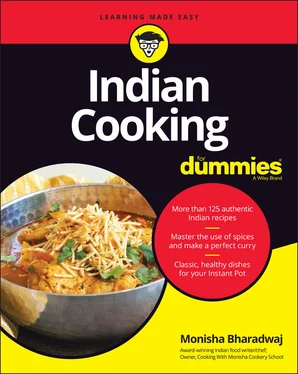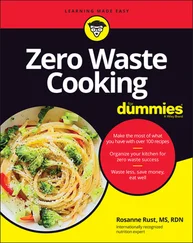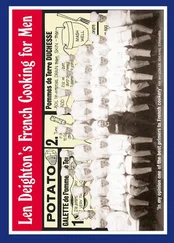IN THIS PART …
Embrace India’s love of veggies and explore Ayurvedic eating.
Discover the regions that make India’s food so diverse.
Use the right tools to make your Indian cooking easy and fun.
Stock your kitchen with well-known Indian ingredients and learn about some new ones.
Chapter 1
Exploring India through Food
IN THIS CHAPTER
 Discovering what makes Indian food so diverse
Discovering what makes Indian food so diverse
 Understanding Islamic influences on North Indian cooking
Understanding Islamic influences on North Indian cooking
 Exploring how India gave the world chai
Exploring how India gave the world chai
 Identifying Christian influences that changed South Indian cooking
Identifying Christian influences that changed South Indian cooking
 Delving into the melting pot of Mumbai’s cuisine
Delving into the melting pot of Mumbai’s cuisine
There is no single Indian cuisine. The more I travel through India in search of new recipes and ways of cooking (I’ve loved going on food trips for many years now), the more convinced I am that there is no other land as varied. India almost seems like it’s several countries in one.
If you’ve traveled to India, you know what I mean. The food of the North and the South (and I’m bunching vast land masses here) vary hugely and then there are countless more smaller regions to consider, too.
In this chapter, I take you on a journey through India so you can see what influences this diversity.
Records of excavations of early civilizations suggest that my ancestors were eating grains and spices from as far back as 3000 BCE. Medical texts estimated to be from the first and second centuries mention spices and herbs for healing purposes.
How spices traveled outside India
Early Europeans imported spices from India to use in food and incense. Around 2,500 years ago, the Arabs controlled the trade. Spices could change hands a dozen times between their source and Europe, soaring in value with each transaction, and the Arabs were the greatest of the middlemen. Eager to keep it that way, they did everything possible to confuse consumers about the origins, some stories claiming that spices grew on remote mountains in Arabia!
Pepper was prized and there was even a Guild of Pepperers in London, the records of which date back to 1180. They bought and sold spices and also controlled the quality. Things changed in the 15th century when the Portuguese explorer Vasco da Gama discovered the route to India by navigating around the Cape of Good Hope. Direct trade routes between Europe and the East opened, and spices such as cinnamon, pepper, and cloves became more commonplace in Western markets.
Later, when the British started the East India Company, its officers began sending Indian recipes in letters back home. Slowly, suburban English housewives began to cook curries in their homes. There was of course, a lack of authentic ingredients and cookware: Tender green mangoes were replaced with tart English apples, and curries that were traditionally thickened with onion paste began to be made with a roux of flour and butter. Basically, they started to make a curry and ended up with apple pie.
To compensate for the lack of all the necessary spices, a convenient mix was created and became known as curry powder. Even today, curry powder is a generic blend that doesn’t even hint at the complexity and variety of India’s cooking.
 No self-respecting Indian cook uses curry powder. Instead, there are subtle regional spices blends in every part of the country that make each cuisine distinct.
No self-respecting Indian cook uses curry powder. Instead, there are subtle regional spices blends in every part of the country that make each cuisine distinct.
Soon small Indian restaurants began to be seen in London, and in the last century, Indian sailors who had fled British ships due to terrible working conditions opened Indian takeout restaurants in the East End. Catering mainly to late pub-goers, they created a simplistic curry menu based on pungency. A fiery hot curry was vindaloo (actually a Goan–Portuguese curry), a Madras was medium (you can’t find a Madras curry in India, let alone an area called Madras), and a korma was mild (a chile korma can be super spicy in India). Along the way, the popular curry known as chicken tikka masala was invented and caught the fancy of the British public; today it’s one of the highest-selling ready meals.
Menus based on heat levels have thrived until present day, and people who have only eaten restaurant food believe it to be the real thing. In this book, I hope to show you how diverse Indian cooking really is and that heat is just one of the things to consider when creating your meal.
The influences that make Indian cooking so diverse
With so many regions, it’s easy to be perplexed by the variety in Indian cooking. If I tell you that India is a vast country, you may reply that there are many other vast countries in the world. That’s completely true, but none has a cuisine that changes every few miles. Here are the reasons Indian cooking is so diverse:
Climate: You may think that all of India is a hot country because it’s in a tropical part of the world, but there are many places in the country that are cold enough to experience snowfall. When we’re in a hot place, we want to eat cooling foods, like ice cream. But it’s India, so we’ll talk about spices. Chilies contain a compound called capsaicin in their membranes; capsaicin is what makes them hot, but when we eat them, capsaicin also makes our blood vessels dilate and makes us sweat. Have you seen some people mopping their foreheads when eating a hot curry? Sweating helps us cool down, and that’s why in hotter parts of India such as the South, which is nearer the equator, recipes have lots of chilies. You’ll find milder curries spiced with pepper in the colder regions.
Geography: In such a big country, eating local food and not paying for transport costs is definitely cheaper. Local recipes make the most of ingredients that grow close by, so you’ll find coconut-based curries in the South and wheat breads in the North. The desert state of Rajasthan uses few fresh vegetables. The ones that do grow are dried and cooked with fiery spices to combat the searingly hot and dry climate. The availability of water is a big contributor to food diversity. In fertile regions that are fed by rivers and seas, more crops can grow. Similarly, there are a variety of soil conditions all over India — the rich black soil of Western India supports the growth of millet, whereas the alluvial soil of Punjab in the North is good for wheat.
Religious beliefs: India is home to many major religious groups. Growing up in cosmopolitan Bombay (as Mumbai was then called), I had Hindu, Muslim, Jain, Christian, Jewish, and Buddhist friends, and we all celebrated each other’s festivals and foods. We knew that some Hindu friends would be vegetarian, whereas others would eat meat but never beef. Our Muslim friends didn’t eat pork. The Jains didn’t eat root vegetables (their way of life is based on nonviolence, so killing of life forms by uprooting vegetables is prohibited). The cuisine of each community is based on these religious beliefs and meant that I was eating vastly diverse foods from when I was quite little.
Читать дальше

 Discovering what makes Indian food so diverse
Discovering what makes Indian food so diverse No self-respecting Indian cook uses curry powder. Instead, there are subtle regional spices blends in every part of the country that make each cuisine distinct.
No self-respecting Indian cook uses curry powder. Instead, there are subtle regional spices blends in every part of the country that make each cuisine distinct.










